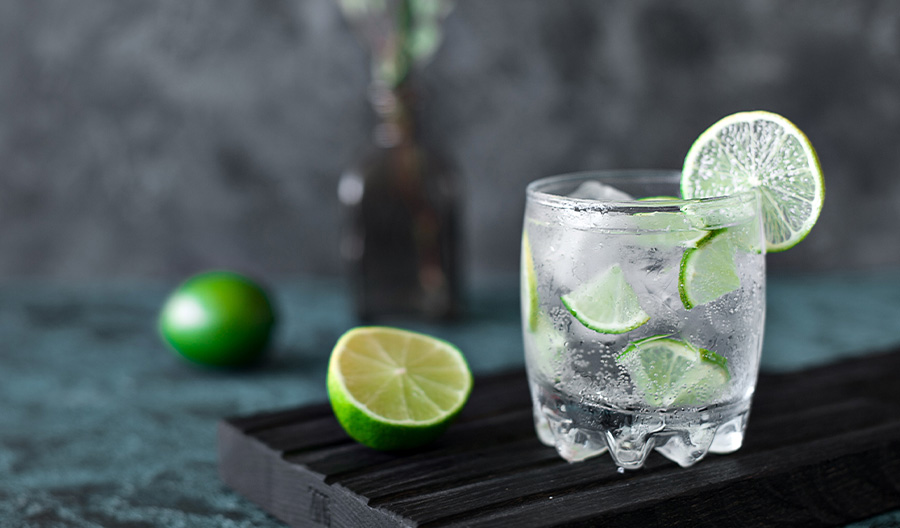American vodka emerges not only as a libation but as a reflection of the nation's diverse terroir and pioneering spirit. From the bustling cities to the heartland's expansive fields, American vodka embodies a sense of innovation, quality, and a commitment to craft. Each bottle tells a story rooted in the richness of the land, the artistry of the distiller, and the indomitable American ethos that shapes the spirits in our glasses.
What is the history of vodka production in America?
The history of vodka production in America is relatively recent compared to its centuries-old origins in Eastern Europe. It wasn't until the late 19th and early 20th centuries that vodka began to make its way into the United States, primarily through immigrants from vodka-producing countries like Russia and Poland.
During the Prohibition era from 1920 to 1933, the production, sale, and transportation of alcoholic beverages, including vodka, were illegal in the United States. However, this did not stop the underground production and consumption of vodka and other spirits. When Prohibition ended, the alcohol industry in America began to recover, and vodka started to gain popularity.
Post World War II, vodka's popularity in America surged. This was largely due to clever marketing campaigns that positioned vodka as a versatile, mixable spirit. The Moscow Mule, a cocktail made with vodka, ginger beer, and lime, was invented in the 1940s and played a significant role in popularizing vodka in the U.S.
Despite its increasing popularity, most vodka consumed in America during the mid-20th century was imported from Europe. It wasn't until the late 20th century that American-made vodka began to emerge. One of the pioneers was Tito's Handmade Vodka, established in Texas in 1997. Tito's was one of the first craft distilleries in the U.S. and helped pave the way for the American vodka industry.
Today, the American vodka industry is thriving, with numerous distilleries across the country producing a wide variety of vodkas. Some, like Tito's, stick to traditional methods, while others experiment with innovative techniques and flavors. The growth of the craft spirits movement in the U.S. has also led to a surge in small-batch, artisanal vodka production.
American vodka producers have also made strides in sustainability, with many distilleries implementing environmentally-friendly practices. For example, some use locally-sourced ingredients, while others recycle waste products from the distillation process.
While vodka production in America is a relatively recent development, it has grown rapidly over the past few decades. From its initial introduction by immigrants to its rise in popularity post-Prohibition and World War II, to the emergence of American-made vodka in the late 20th century, the history of vodka production in America is a fascinating journey that reflects broader trends in American history and culture.

The key differences between American vodka and other types
One of the key differences between American vodka and other types lies in the ingredients used. While traditional vodka, like Russian and Polish vodka, is often made from potatoes or grains, American vodka can be made from a variety of base ingredients. This includes corn, grapes, and even apples, leading to a unique range of flavors.
Another distinguishing factor is the distillation process. American vodka producers often use continuous column stills, which allow for a higher degree of purification and consistency. This differs from the pot stills commonly used in Eastern Europe, which can result in a vodka with more character and flavor nuances.
American vodka also tends to be more experimental in terms of flavor infusions. While European vodka producers often stick to traditional flavors, American brands are known for their wide array of infused vodkas, ranging from sweet and fruity to savory and spicy.
Regulation is another area where American vodka differs. In the United States, vodka must be distilled to at least 95% alcohol by volume (ABV) and then diluted to no less than 40% ABV. This differs from European regulations, which can vary by country and may allow for lower distillation levels.
Popular trends and consumer preferences
In the American vodka market, there has been a noticeable shift towards craft and artisanal products. Consumers are increasingly interested in small-batch vodkas, often produced by local or regional distilleries. These vodkas are typically characterized by their unique production methods, high-quality ingredients, and distinctive flavor profiles. They often come with a story of their origin, which adds to their appeal.
Another significant trend is the growing demand for flavored vodkas. While traditional, unflavored vodka continues to be popular, many consumers are seeking out vodkas infused with a variety of flavors. These range from fruity options like raspberry and citrus, to more unusual offerings such as cucumber, rose, and even bacon. This trend is driven by a desire for variety and novelty, as well as by the popularity of cocktails, which often call for flavored spirits.
Health-consciousness is also influencing the vodka market. Many consumers are looking for vodkas that are low in calories and carbs, or that are made from organic or gluten-free ingredients. Brands that can cater to these preferences are likely to find a receptive audience. This trend is part of a broader shift towards healthier and more mindful drinking, which is affecting the alcohol industry as a whole.
Premiumization is another key trend. Consumers are willing to pay more for vodkas that are perceived as high-end or luxury products. This can be due to the quality of the ingredients, the sophistication of the production process, the brand's reputation, or the product's packaging and presentation. This trend reflects a desire for quality over quantity, and for experiences that feel special and indulgent.
Sustainability is becoming an important factor in consumer choices. Many vodka drinkers are interested in brands that prioritize environmentally friendly practices, such as using renewable energy, minimizing water usage, or sourcing ingredients locally. This trend is part of a larger societal shift towards more sustainable and responsible consumption.

